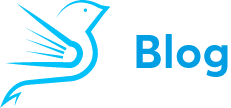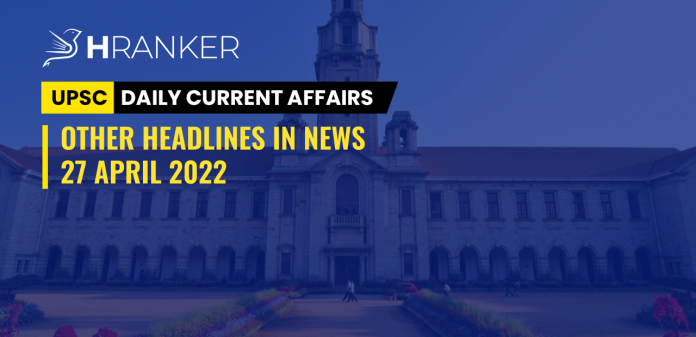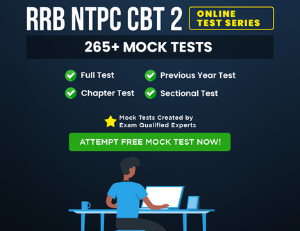- ASTHMA DRUG BLOCKS PROTEIN CRUCIAL TO REPLICATION OF CORONAVIRUS: IISc STUDY
HIGHLIGHTS:
- A widely available drug, used for treatment of asthma and allergies, can also block a protein that is key to replication of SARS-CoV-2, the virus that causes COVID-19.
- The drug, Montelukast which is approved by the US Food and Drug Administration (FDA) and has been in use for more than 20 years, is an oral treatment given to prevent wheezing, difficulty breathing, chest tightness, and coughing caused by asthma, and is also used to prevent breathing difficulties during exercise.
- Antiviral activity: When SARS-CoV-2 infects the human cell, it releases a protein called Nsp1 which is one of the first viral proteins unleashed inside the human cells and is key to replication of the virus. This protein can bind to ribosomes – the protein-making machinery – inside our immune cells and shut down the synthesis of vital proteins required by the immune system, thereby weakening it. This helps in the establishment of viral infection.
- Targeting Nsp1, therefore, can reduce the damage inflicted by the virus. And the IISc researchers found that montelukast binds strongly to Nsp1, blocking its access to the ribosome.
- Other viral proteins could still bind elsewhere on the host cell. However, blocking viral Nsp1 allows the host cells (human cells) to synthesise immune effector proteins to fight the viral infection.
- Nsp1’s mutation rate is very low as compared to other viral proteins, which means Nsp1 is likely to remain largely unchanged in any virus variants that emerge. Hence drugs targeting this region are expected to work against all such variants.
SOURCE: THE INDIAN EXPRESS, THE ECONOMIC TIMES
- COUNTRIES WILL HAVE TO ‘JUSTIFY’ VETO VOTES AT United Nations (UN)
HIGHLIGHTS:
- The 193 members of the United Nations General Assembly (UNGA) adopted a resolution by consensus. The resolution is titled ‘Standing mandate for a General Assembly debate when a veto is cast in the Security Council’. The resolution requires P5 (Permanent 5) members of the United Nations Security Council (UNSC) to justify their use of the veto.
- First proposed more than two years ago, the measure provides for the General Assembly to be convened within 10 working days after a veto “to hold a debate on the situation as to which the veto was cast.”
- The push for reform was revived by Russia’s invasion of Ukraine.
- The measure is intended to make veto-holders United States, China, Russia, France and Britain “pay a higher political price” when they use the veto to strike down a Security Council resolution.
- Almost 100 countries joined Liechtenstein in co-sponsoring the reform, including the United States, Britain, and France.
- India said though it supports any genuine initiative to achieve meaningful and comprehensive reform but such a resolution “demands much more serious, in-depth, and inclusive deliberation”.
- India also voiced its ‘regret’ and said it has ‘serious concerns’ about such ‘take it or leave it’ initiatives that do not consider perspectives and concerns of the wider membership. India rues ‘lack of inclusivity’ in the way, the resolution was put forth.
SOURCE: THE HINDU, THE INDIAN EXPRESS, THE WIRE
- MP (Member of Parliament) QUOTA FOR KV ADMISSIONS SCRAPPED
HIGHLIGHTS:
- According to the revised guidelines issued by the Kendriya Vidyalaya Sangathan (KVS) — an autonomous body under the Union ministry of Education — several amendments have been made under the ‘special provisions’ section of the admission policy.
- The Centre has scrapped some quotas, including that of 100 children of Education Ministry employees; children and dependent grandchildren of MPs (Members of Parliament) and retired KV employees, and the discretionary quota of school management committee chairman, who, in most cases, is the District Magistrate.
- Under KVS Special Dispensation Admission Scheme or MP quota, a parliamentarian could recommend up to 10 students from their constituency every academic year for admission in classes 1 to 9. Under the rules, the 10 names would have to be confined to children whose parents belong to the constituency of the recommending MP.
- The special provisions that have been retained include admissions for children of recipients of Param Vir Chakra, Maha Vir Chakra, Vir Chakra, Ashok Chakra, Kirti Chakra and Shaurya Chakra; recipients of the National Bravery Award; 15 children of Research and Analysis Wing (R&AW) employees; children of central government employees who died in harness; children who have shown special talent in fine arts.
- Some new provisions have also been added which include 50 seats for the wards of group B and C central police organisations such as CRPF, BSF, ITBP, SSB, CISF, NDRF, and Assam Rifles based on a list provided by the ministry of home affairs. The Centre has also decided that children orphaned due to Covid-19 will be considered for admission under PM CARES for Children Scheme.
SOURCE: THE INDIAN EXPRESS
- CENTRAL BOARD OF DIRECT TAXES (CBDT) AIMS TO LIFT TAX to GDP RATIO TO 15-20% FROM THE CURRENT 12%
HIGHLIGHTS:
- India registers its highest net direct tax collections in FY22, which is the highest collection ever with a growth of 49.02%, signaling that the Indian economy has bounced back after two years of the pandemic – CBDT Chairman.
- Increase in net and gross collection numbers is a major indication of the strengthening of the Indian economy.
- Presently, the direct Tax-to-GDP ratio is around 12% and CBDT is working to raise the ratio to 15-20% in 5-10 years.
- The direct tax collection this year has surpassed the indirect tax collection which was other way round till last year. It is now 52% and with the reforms initiated by the government, CBDT aims to make it 60%.
- Tax-to-GDP ratio represents the size of a country’s tax kitty relative to its GDP. It represents the size of the government’s tax revenue expressed as a percentage of the GDP. It is a marker of how well the government controls a country’s economic resources. Developed countries tend to have a higher tax-to-GDP ratio.
- High tax to GDP ratio defines better financial position of the country. It represents that the government is able to finance its expenditure. It reduces a government’s dependence on borrowings. Low tax-to-GDP ratio poses significant challenges for the government to spend money on creating necessary infrastructure in the economy and raise investment and puts pressure on the government to meet its fiscal deficit targets.
- Tax to GDP ratio in an economy can be improved by increasing tax buoyancy and widening the tax base of the country and ensuring that the citizens pay their taxes.
- A tax base is a total amount of assets or income that can be taxed by a taxing authority, usually by the government.
- Tax buoyancy explains the relationship between the changes in government’s tax revenue growth and the changes in GDP. A tax is buoyant when revenues increase by more than 1% for a 1% increase in GDP, which means its revenue increases without increasing the tax rate.
SOURCE: THE HINDU, THE ECONOMIC TIMES




